Korean Garden Ideas: Transform Your Yard with Tranquil Elegance
Korean gardens offer a unique blend of natural beauty and thoughtful design that can transform your outdoor space into a tranquil haven. They incorporate elements such as flowing water, carefully placed rocks, and lush greenery to create a harmonious and serene environment. These gardens have a long history and are influenced by traditional nature-based religions and imported Buddhism practiced in Korea.
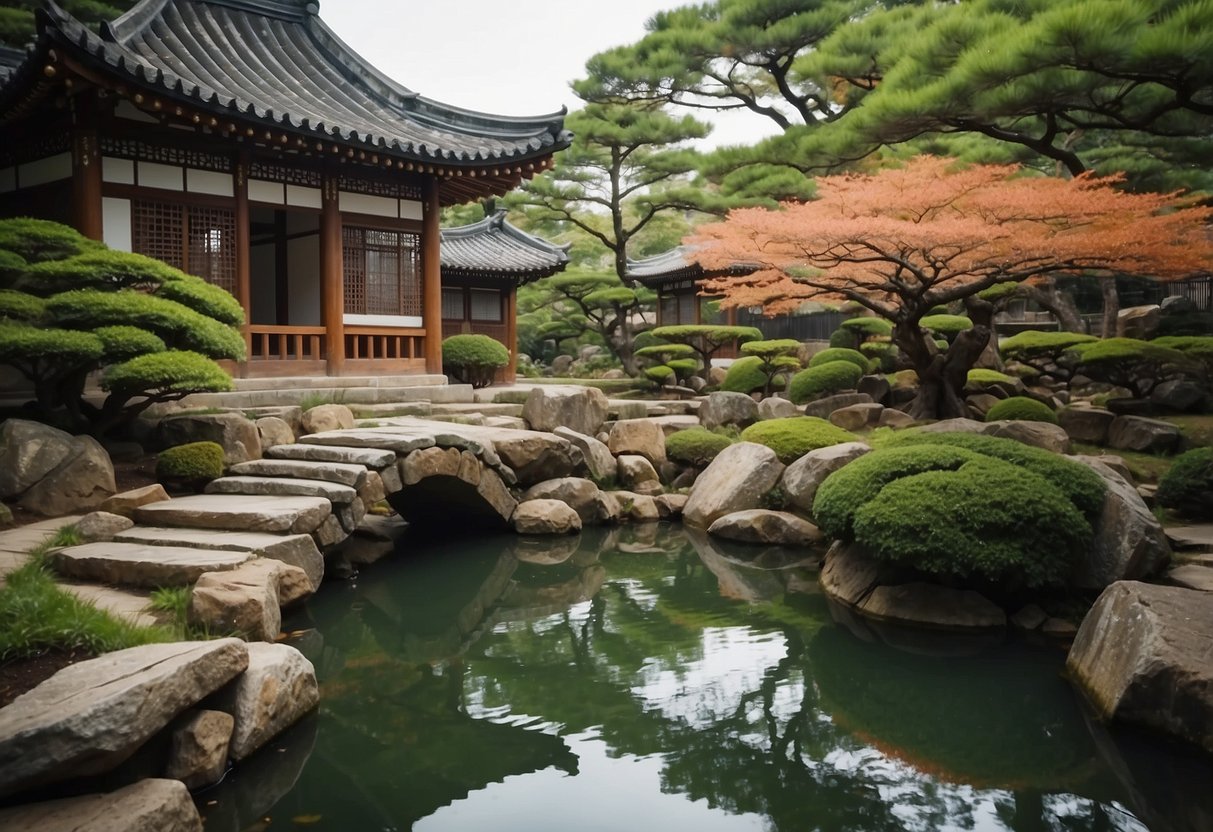
Korean garden ideas are perfect for creating a peaceful retreat right in your backyard. Whether you’re looking to add traditional elements like stone paths and water features or simply want to know more about the plants that thrive in these settings, you’ll find inspiration in the rich cultural heritage and aesthetic of Korean garden design. Dive into these ideas to bring a touch of East Asian tranquility to your outdoor space.
1) Zen-inspired rock garden
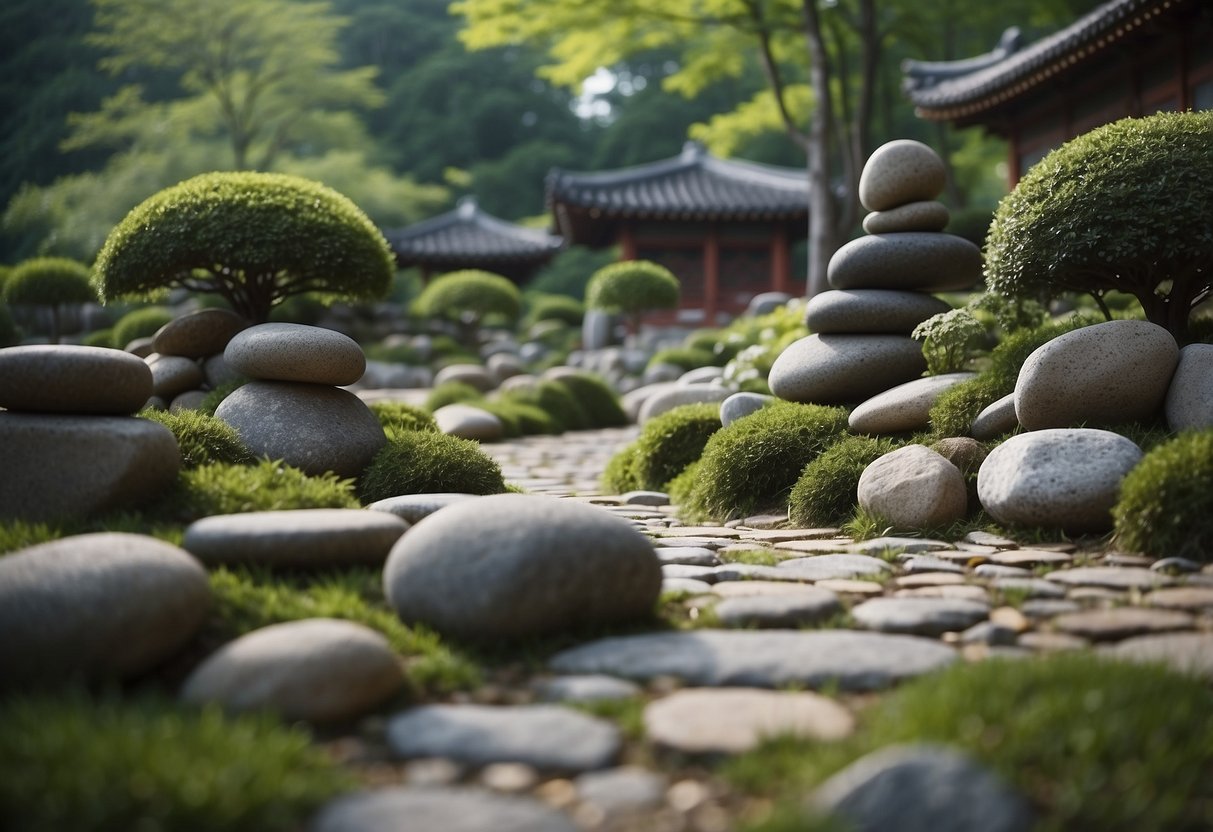
Adding a Zen-inspired rock garden to your space offers tranquility and peace.
You can design it with sand or gravel to symbolize water. Use a rake to create soothing patterns.
Include stones of different sizes to represent mountains. Adding a gentle water feature can enhance the calming atmosphere.
Tall grasses or small bushes can soften the look and add greenery.
2) Korean-style Stone Lanterns
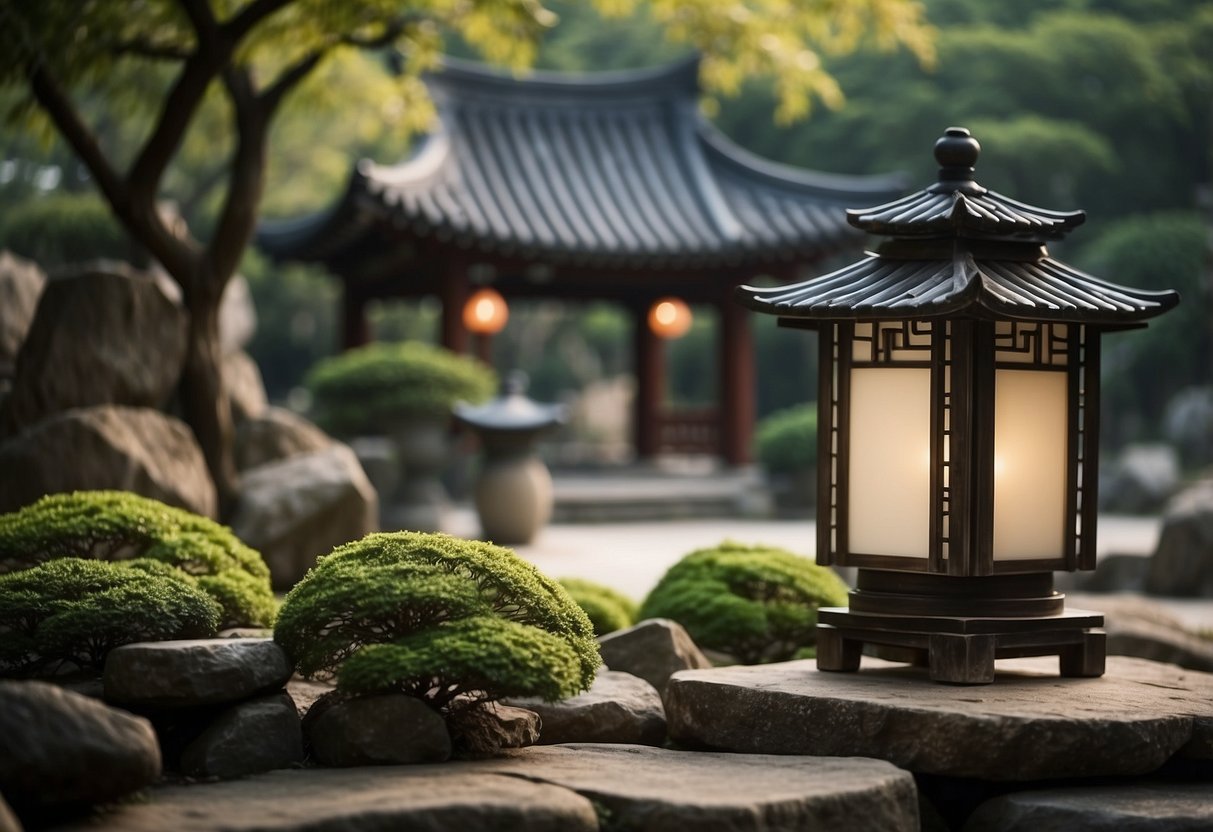
Korean-style stone lanterns add a beautiful feature to your garden. These lanterns often have intricate carvings and natural shapes inspired by traditional designs.
You can place them along garden paths or near water features to create a serene atmosphere.
Made from durable stone, these lanterns can withstand weather and add a timeless feel to your garden space.
3) Bamboo Privacy Screen

A bamboo privacy screen is a wonderful addition to your garden. It not only offers privacy but also adds a touch of nature. Bamboo grows quickly, so it won’t be long before you have a tall, green barrier.
You can create your own bamboo screen by planting bamboo plants in a row. Bamboo can grow up to 30 feet tall, making it perfect for a high screen. For a faster setup, consider using pre-made bamboo panels.
Bamboo is known for being sustainable and is often used in eco-friendly gardens. It’s an easy way to make your outdoor space more private and serene. If you’re interested in exploring bamboo options, you can find more ideas here.
4) Chang-ho Window Panels
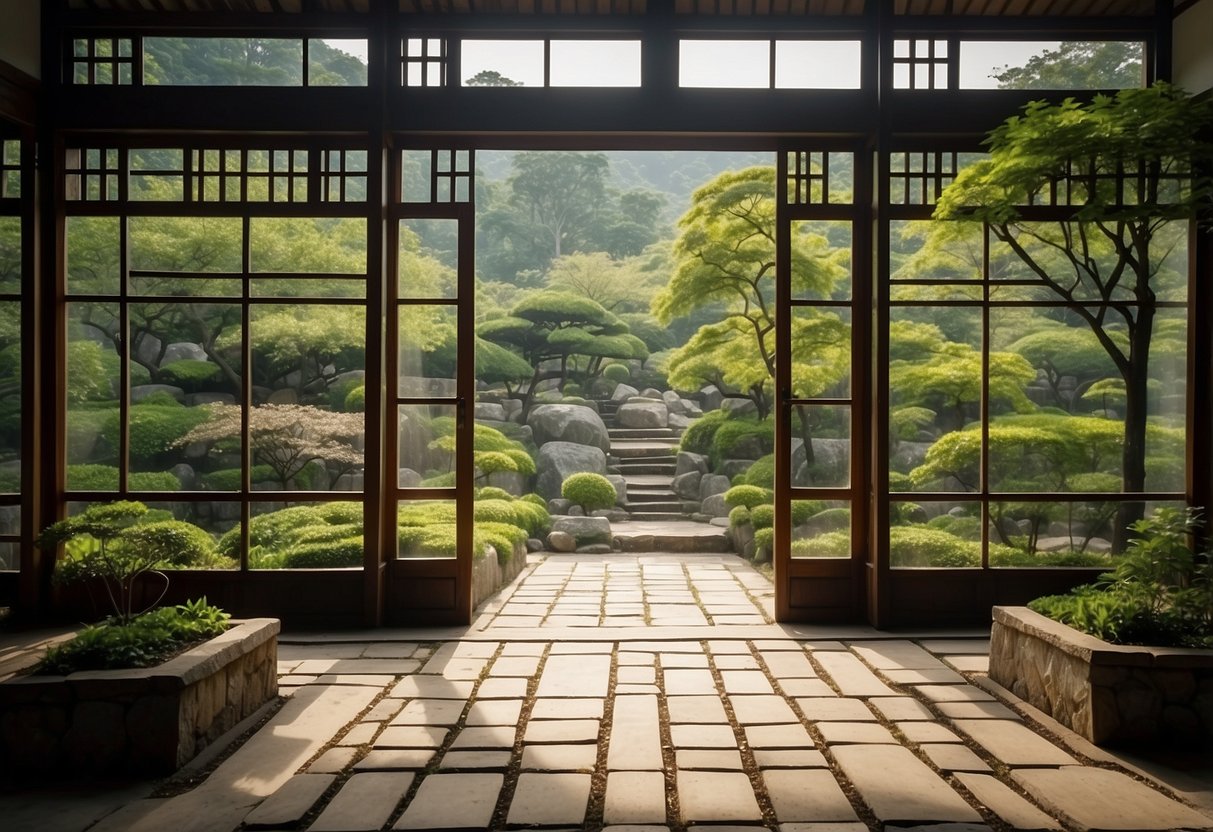
Chang-ho window panels are a unique feature in traditional Korean gardens. These wooden panels often have intricate designs and serve to filter light and provide privacy.
You can find these panels in places like Chung Won San Bang, a museum dedicated to traditional windows and doors. Incorporating Chang-ho window panels into your garden adds an authentic touch of Korean culture.
Consider placing these panels in a secluded spot in your garden to create a peaceful retreat. The wood’s texture and design add beauty and elegance to your outdoor space.
5) Traditional Korean Pavilion (Hanok)
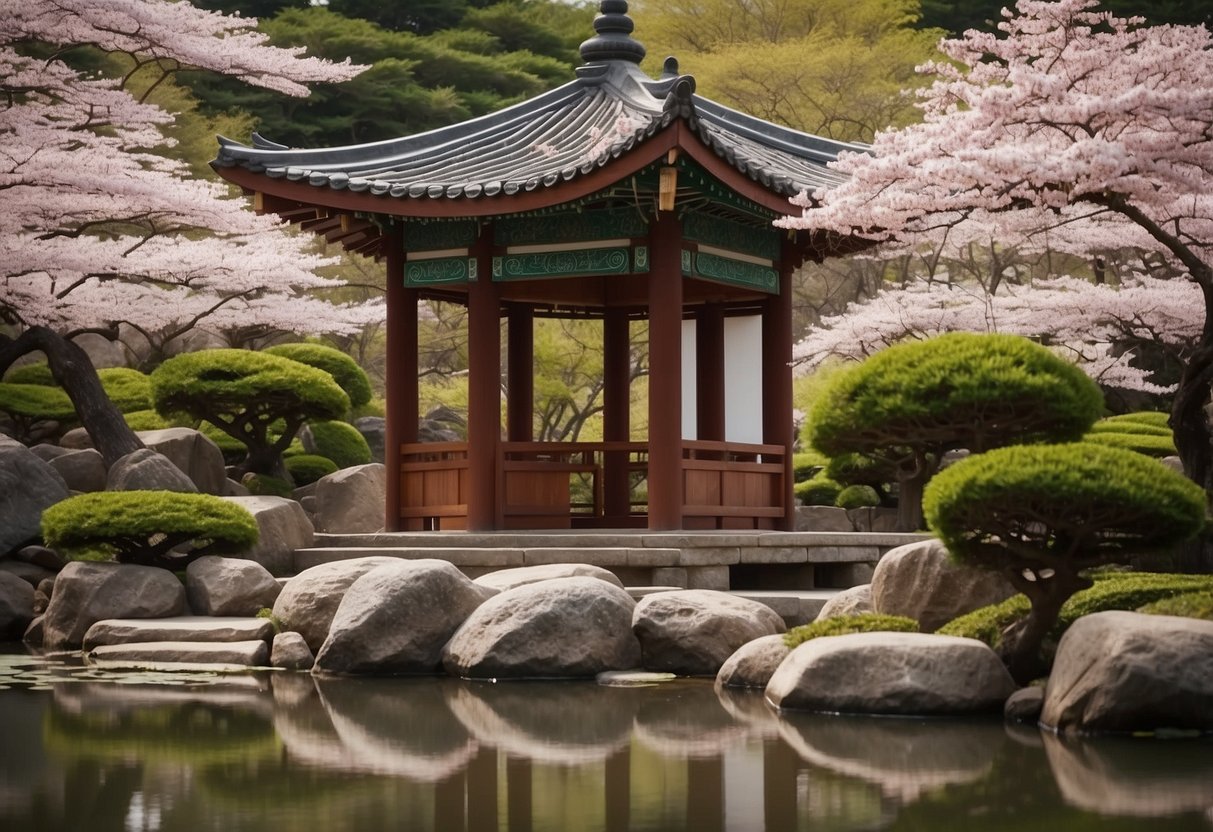
A Hanok pavilion adds a serene touch to your garden. It is a classic structure with elegant eaves and wooden beams. The pavilion offers a cozy spot to sit and enjoy the scenery.
You can find inspiration for such designs by checking out these Korean gazebo ideas. Pavilions often harmonize well with other garden elements like trees, rocks, and water features.
6) Koi Ponds with Stepping Stones
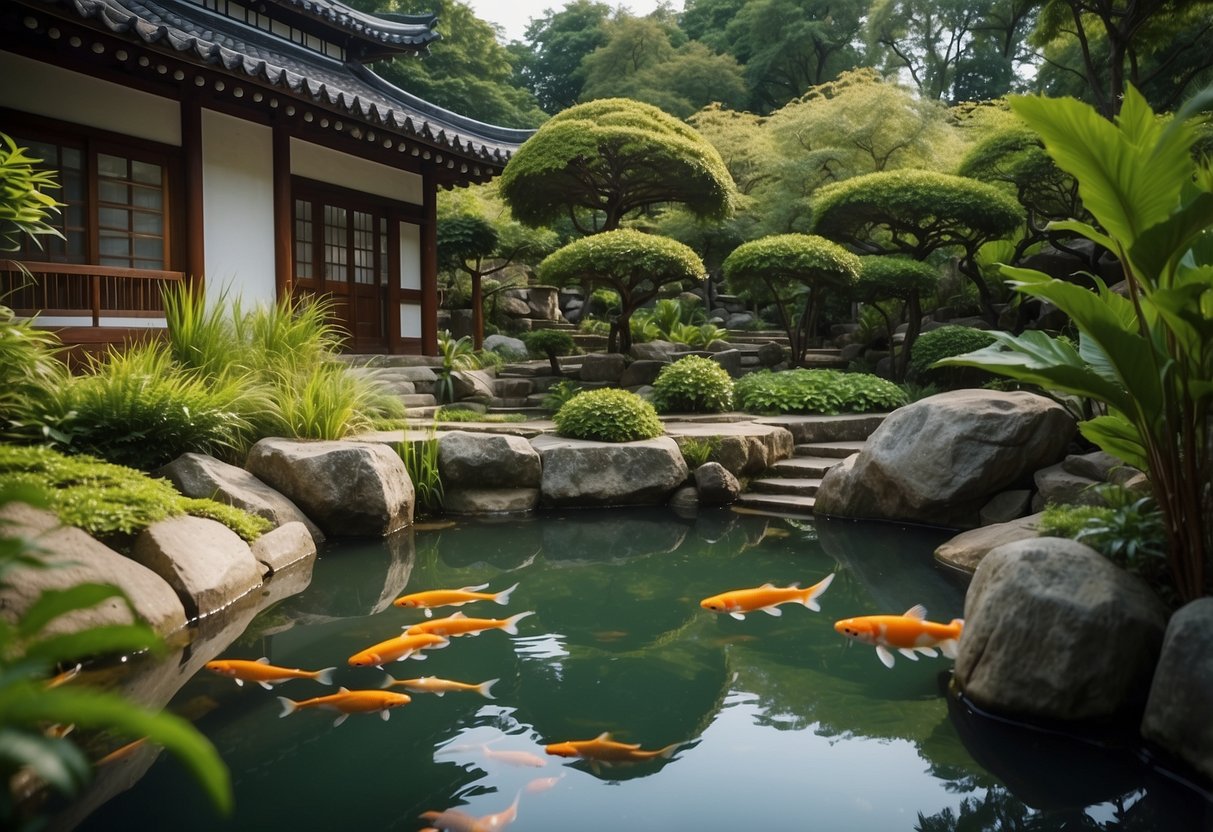
A koi pond with stepping stones adds a charming touch to your Korean garden. You can use natural materials like stone or bamboo for the stepping stones. This not only adds visual interest but also gives you a way to get closer to the koi.
Place the stepping stones around the edges or across a shallow part of the pond. This creates a lovely pathway and connects different areas of your garden. For added texture and beauty, surround the stones with pebbles or gravel.
Consider adding plants like water lilies around the stepping stones for a splash of color and extra shade for the koi. Keep the arrangement simple and natural to maintain the serene feel of your Korean garden.
7) Winding Garden Paths
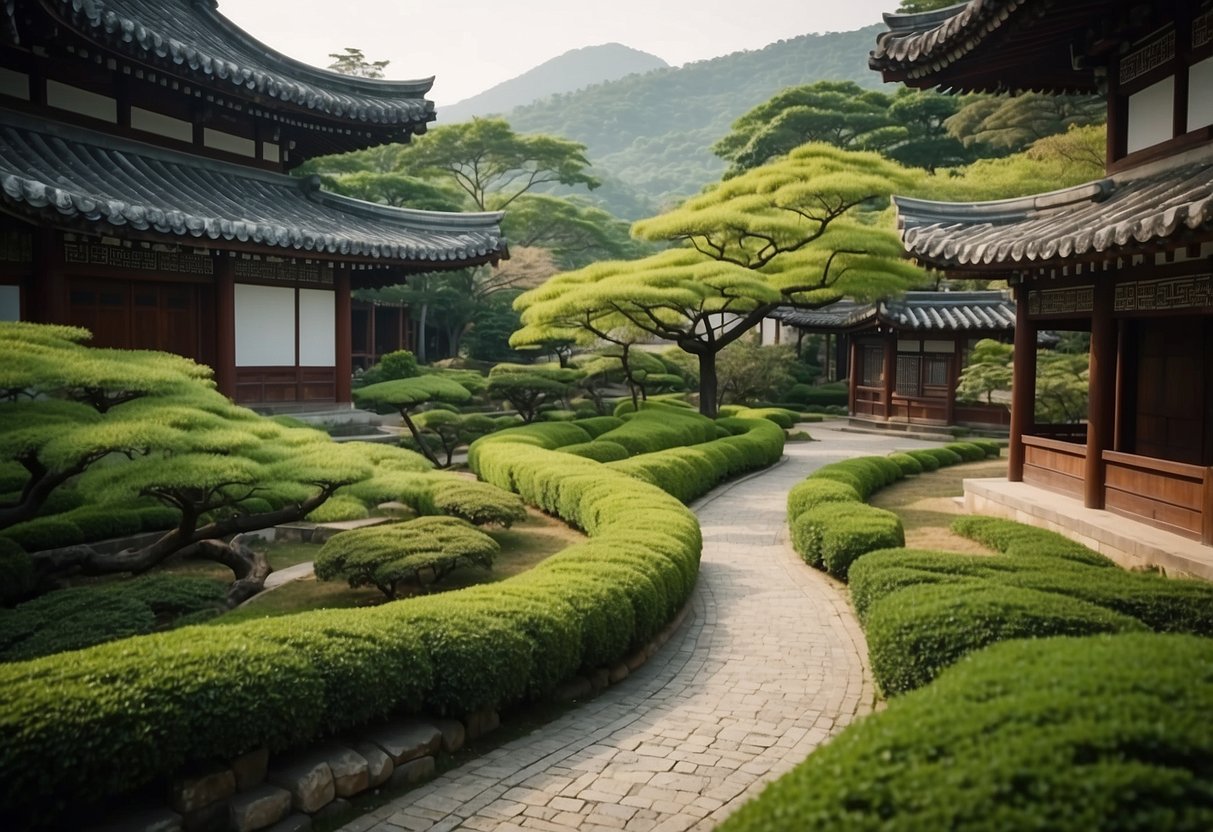
Winding garden paths bring a sense of mystery and discovery to your space. By using curvy and irregular pathways, you create a journey for visitors, inviting them to explore and engage with the garden.
In a traditional Korean garden, these paths reveal scenic views gradually. This technique helps smaller gardens feel more expansive and dynamic.
Consider using natural materials like flagstone or gravel. The texture and color of these materials blend well with the natural elements of the garden, enhancing the overall harmony.
8) Native Korean Pine Trees

Native Korean pine trees, especially the Korean pine, are a key feature in traditional Korean gardens. These trees can grow up to 50 feet tall in cultivation and even taller in their natural habitat.
Young Korean pines have a narrow pyramidal shape with branches that grow upwards. Their needles are dark green on top and grayish underneath, giving a unique blue-green effect.
The Korean pine is known for its lush foliage and cone-shaped clusters of needles. It adds a breathtaking touch to any garden. For more detailed information, you can visit Missouri Botanical Garden’s page on the Korean pine.
9) Lotus Flower Water Feature
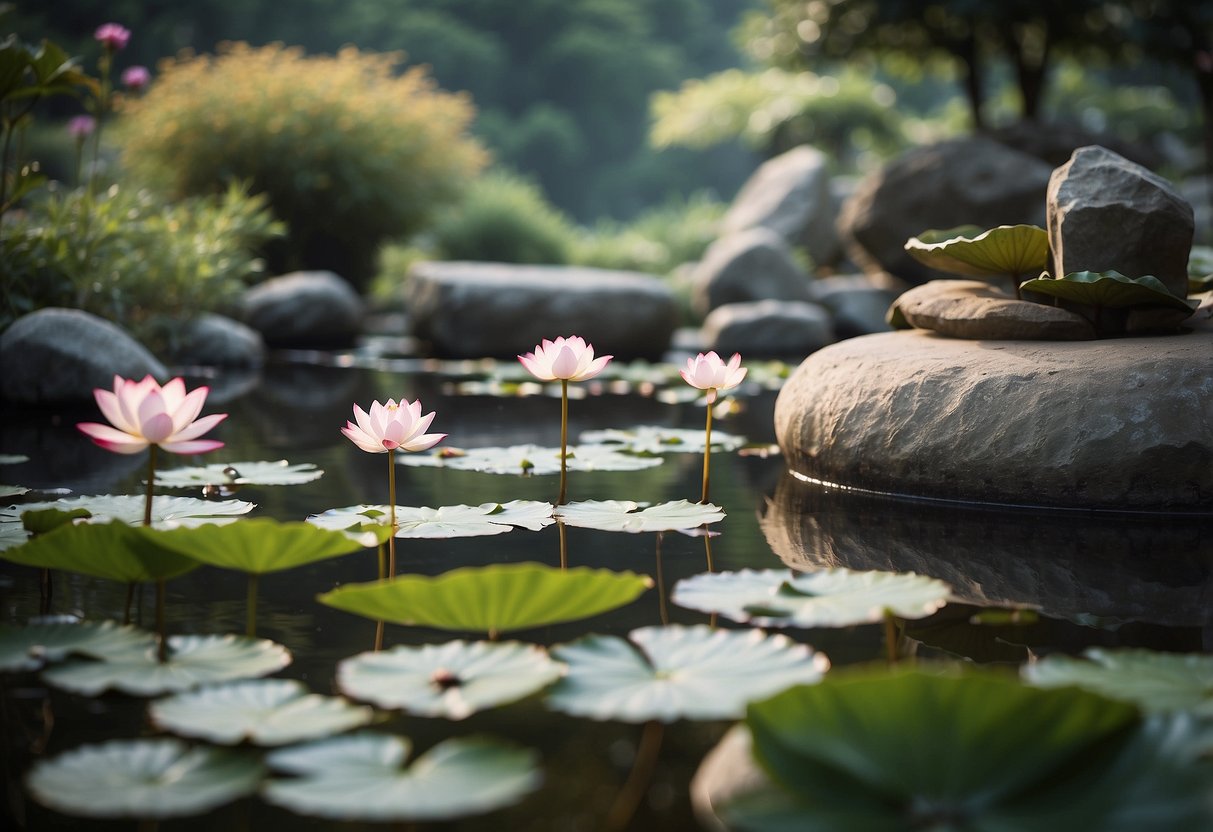
Adding a lotus flower water feature to your Korean garden brings peace and beauty. The lotus flower needs full sunlight, so make sure it gets at least six hours each day.
Warm water helps lotus flowers grow well. You can change the water often to keep it clear.
Lotus flowers bloom in many colors, adding vibrant beauty to your garden. The sight of lotus flowers can make your space feel serene and welcoming.
10) Ornamental Korean Roof Tiles

Korean rooftiles, or giwa, come with beautiful, intricate designs. Traditionally, these tiles were often made of clay and decorated with celadon glaze, giving them a unique greenish tint that mimics jade.
You can find these tiles on many old buildings and temples in Korea. They not only serve a practical purpose but also add a rich cultural element to your garden. Using these tiles can give your garden an authentic, traditional feel. You might even use them to create small structures or decorative walls within the garden space.
Design Principles for Korean Gardens

In Korean gardens, the focus is on creating a tranquil and harmonious space. The design principles emphasize harmony with nature and balance and proportion. These aspects help create a sense of peace and unity in the garden.
Harmony with Nature
Korean gardens aim to blend seamlessly with the natural landscape. You should choose plants and materials that complement the existing environment. Trees and shrubs are often native species that naturally thrive in the area.
Water features like ponds or streams can add to this sense of harmony. The sound of flowing water creates a peaceful atmosphere. Stones and boulders are carefully placed to mimic natural rock formations. Paths and walkways often follow the natural contours of the land, promoting a smooth and natural flow through the garden.
The garden should look like an extension of the surrounding nature. This means avoiding sharp lines and artificial elements. Instead, strive for a more organic, flowing design.
Balance and Proportion
Balance is key in Korean garden design. Elements like plants, rocks, and water features need to be arranged so that the garden feels stable and pleasing to the eye. Symmetrical arrangements are common, but asymmetrical designs can also work if they are well thought out.
It’s important to consider the size and scale of each element. Large trees should not overpower smaller plants. Rocks should be proportionate to the garden’s overall size. When everything is in balance, it creates a sense of harmony that is both visually appealing and calming.
Pathways and structures should be proportional to one another as well. For instance, a modest pavilion should not overshadow a small pond. By paying attention to balance and proportion, you can create a garden that feels cohesive and inviting.
Essential Elements in Korean Garden Design

In Korean garden design, balance and harmony play key roles. Water features and plants are two essential elements that create a tranquil and natural atmosphere.
Water Features
Water features like ponds and streams bring a sense of calm and movement to your garden. Ponds often feature koi fish and water lilies, adding color and life. Small waterfalls or cascading streams provide soothing sounds and visual interest.
In a Korean garden, you might place rocks thoughtfully around water features. These rocks can symbolize mountains or islands, creating a mini landscape. Make sure the placement looks natural, not too symmetrical or planned. Water features can also help attract birds and other wildlife, making your garden even more vibrant.
Plants and Trees
Plants and trees are vital to capturing the essence of a Korean garden. Evergreens like pine trees are common, representing longevity and resilience. Flowering plants like azaleas and camellias add seasonal color and charm.
You can also use bamboo for its unique texture and symbolism of flexibility. Arrange plants and trees to create depth and layers, with taller trees in the back and shorter shrubs and flowers in the front. This creates a sense of space and visual interest.
Aim for a mix of different plant types to keep your garden lively all year round. Deciduous trees, for instance, provide shade in the summer and lovely foliage in the fall.







